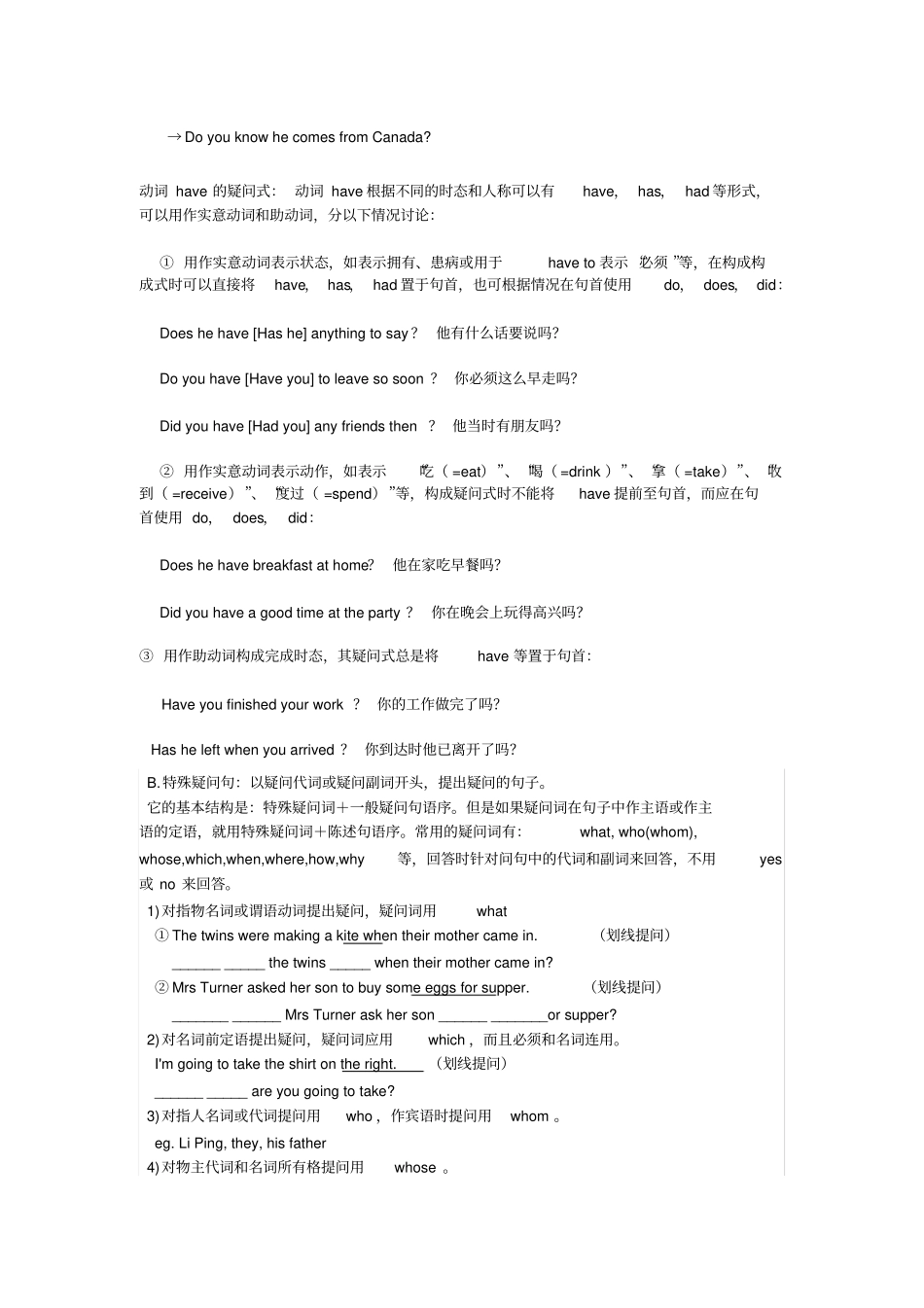陈述句变一般疑问句的规则一、陈述句:是用来陈述一件事情或表示一种看法,可分为肯定句和否定句两种形式。1、谓语动词是be 动词( am, is are, was, were),助动词 do, does, did, have, has, 情态动词 will, would, must, should, need, can, could, ought to, may, might, shall ,dare等时,只要直接在这些词后面加not 就构成否定形式。eg. Lily has already read this new book. (改为否定句 ) Lily ______ ______ this new book ________. 2、谓语动词是行为动词而又没有助动词或情态动词时,必须在谓语动词前加助动词,一般现在时加助动词do ,第三人称单数加does ,一般过去时加did ,再和 not 构成否定结构。必须指出的是:don't, doesn't, didn't后都用动词原形。eg.1)Jill has lunch at school every day. (改为否定句 ) Jill _____ _____ lunch at school every day. 2)The children had a good time at the party. (改为否定句 ) The children ______ _____ a good time at the party. 3)Rose didn't drink any milk this morning.(改为肯定句 ) Rose ______ ______ milk this morning. 二、疑问句:是用来提出问题的句子。A.一般疑问句:以be 动词 , have /has/do等助动词、 can/may 等情态动词开头,以yes 或no 来回答的问句。它的基本结构是:Be/Have /Has/Did等助动词(包括情态动词)+主语+谓语(包括表语)+┄?回答常用简略回答。1、谓语动词是be 动词、助动词、情态动词时,只要直接把这些词置于句首,句末改成问号。eg. There's something wrong with his bike.(改成疑问句)______ _____ _______ wrong with his bike? 2、谓语动词是行为动词时,必须在句首加上助动词Do 、Does (三单)、 Did (过去式)加上这些助动词后,句子中谓语动词必须用原形。eg. 1)Edison built a science lab himself when he was ten. (改成疑问句)______ Edison ______ a science lab himself when he was ten?2)Those Japanese like Chinese food.(改成疑问句)______ those Japanese ________ Chinese food? 注意:在把肯定句改成否定句或一般疑问句的时候,要注意句中是否有already、some、something、somebody 等词,如果有也必须进行改变,already 要改成...


